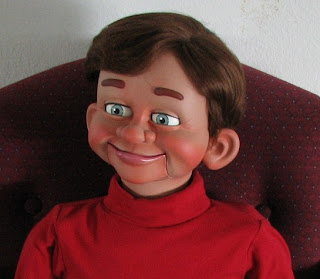Seriously, my wife Cathy, is a bit broken at the moment. A freak accident for sure. She was going out of the workshop last week, tripped, and while doing that little trick, sprained her right ankle. But then while still falling and trying to catch herself, ended up breaking her left ankle in 2 places! Other than that she is just fine! <G> But, ouch!!!
So, needless to say, things have gotten quite a bit more interesting here. I mean I have always appreciated all Cathy does here at Puppets and Props (as well as in our home). But you don't really fully appreciate HOW MUCH someone does until they are completely out of commission. Now I know for sure! <G>
As some of you know, I've had some serious health issues of my own this last year. The best I can guess is that she didn't like me getting ALL of the attention on that front! <G> But I can surely think of easier, and less painful ways of getting attention.
Of course, I know why this really happened. We've been in the midst of making some changes to simplify things here. We now have just the one line of high quality figures that we've always been known for. And as many of you know, we are putting the 'cast dummy parts' on hold after Nov. 30th, so we can get caught up on our finished figure orders (our main line of business).
So I guess we were getting just too dog gone close to having a chance to get caught up here! <G> That's all I can figure. Ha! Gotta keep your sense of humor at times like this. That also is good medicine for both my wife and I.
Yes, its going to take a bit longer to get caught up on finished figure orders than we originally anticipated. And yes, the influx of last minute 'cast dummy parts' orders as we get closer to Nov. 30th will be a challenge to fill on top of that. But I am very confident that it will all work out and things will equalize once again.
But more than wishing these temporary time issues would get fixed soon, my greatest wish is for my wife Cathy to be all better again. So let's hope "all the king's horses, and all the king's men"............, well, okay, I'll settle for one good Doctor to put her back together again! <G>
From now on, this is the only kind of fall I want to see (<G>)............

















































